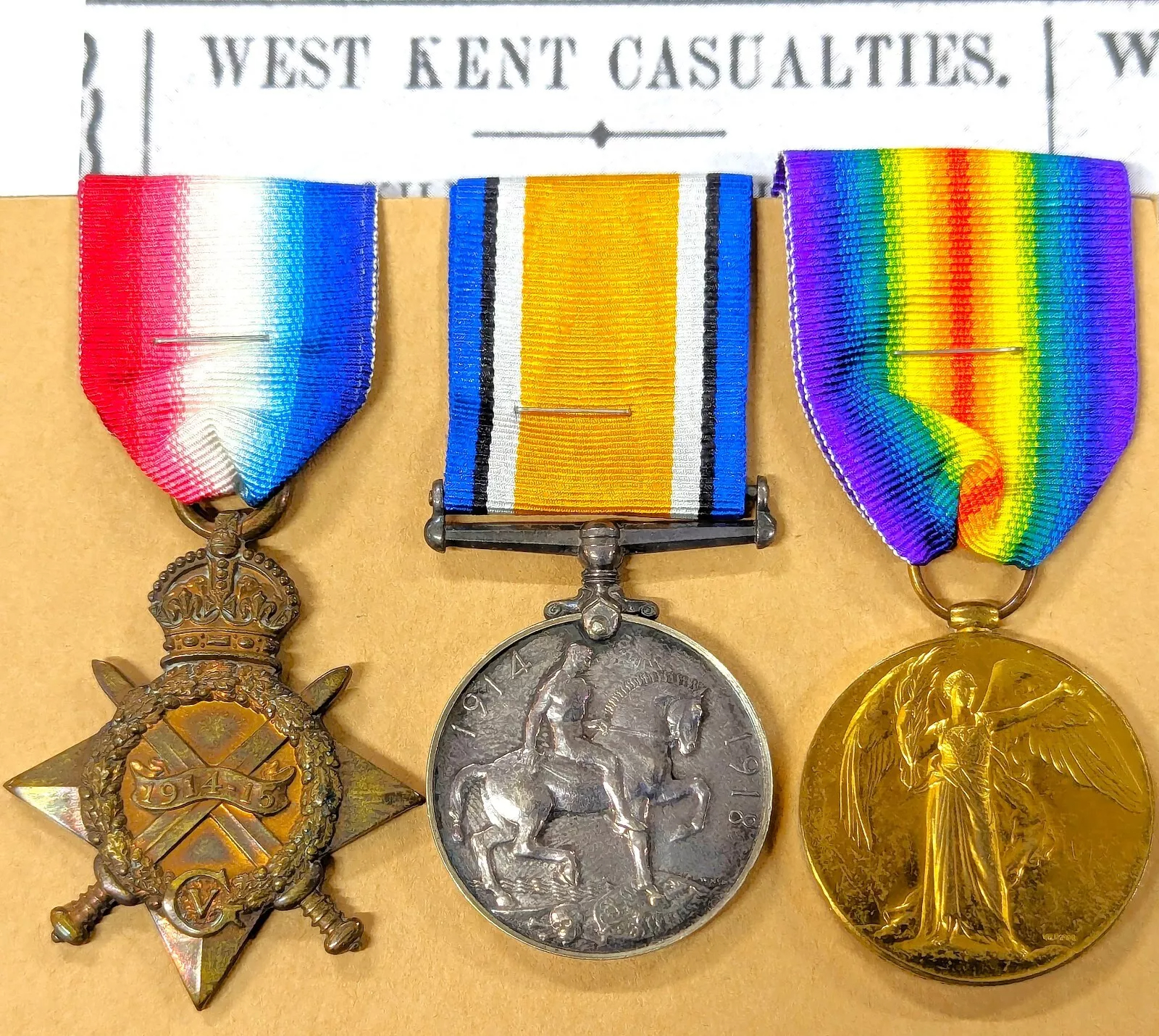1914 – 15 Star, British War and Victory Medals (1914 – 18) all impressed named L-8528 PTE W. BROSNAHAN. R.W. KENT. They come with copies of MIC, medal rolls, and newspaper article.
William Brosnahan was a prewar Old Contemptable who enlisted into the Queen’s Own (Royal West Kent Regiment) about 1906-1907, based on his service number L (denoting regular Army) 8528. Service number 8228 joined on 3/1/1906 and 8689 joined on 15/7/1907.
On the outbreak of the Great War, the 2nd Battalion R.W.K. were garrisoning India and stationed in Multan (Mooltan). It deployed to Mesopotamia, arriving at Basra on 6/2/1915 where it came under command of 12th Indian Brigade.
He appears in the casualty list dated 6/9/1915, the lists were usually 5 – 6 weeks behind the event so it is probable that he was wounded about late July. Possibly during the battle of Nasiriyeh (25/7/1915).
The area was covered in wetlands, however the troops used small boats through the series of marshes and canals to reach the city. Temperatures were well above a hundred degrees Fahrenheit and mosquitoes just added to the misery.
The main Turkish defences were a series of entrenchments located on both sides of the Euphrates with their flanks defended by marshes. British forces attempted to assault the Turkish defences through the marshes but were beaten back. The next couple weeks were marked by a stagnation in the fighting and illness and heat stroke afflicting both armies. On 24 July, a British barge was towed to the middle of the river and engineers worked tirelessly under fire to attempt to construct a bridge. The barge managed to impede the river flow enough to allow British and Indian troops to wade across where they overran the Turkish positions.
533 British and Indian troops were killed or wounded in the battle with 2,000 killed and wounded on the Turkish side. 1,000 Turk soldiers were taken prisoner and large stockpiles of Ottoman military equipment were captured as well.
The plight of the wounded was truly horrific due to lack of planning/foresight and incompetency by the British Army. It is unknown how badly wounded he was, but he survived the war. Two Companies were attached to the 30th Brigade in the 6th (Poona) Division in November 1915 and became besieged at Kut-al-Amara, where they were captured on 29/4/1916. The fate of the British and Empire prisoners exceeded the fate of the WW2 Japanese prisoners.
The remaining companies were attached to 34th Brigade which was part of 15th Indian Division, transferring to 17th Indian Division in August 1917. It remained in Mesopotamia throughout the war. As a professional soldier it would appear that he continued to serve post war.




